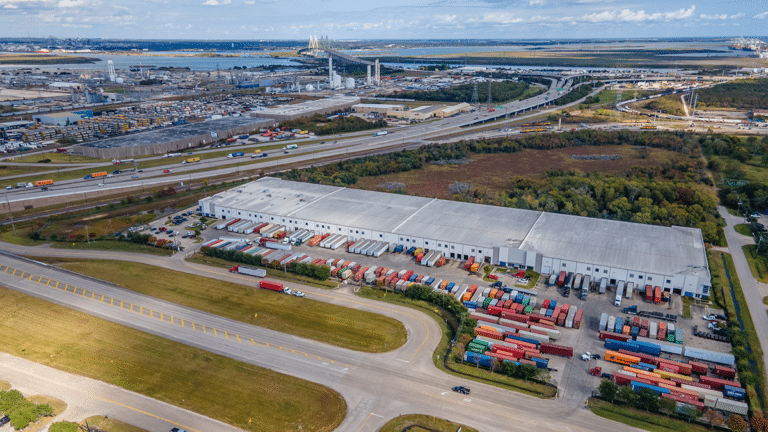At the beginning of the pandemic, 75% of US businesses experienced supply chain disruptions. Fast-forward 18 months to a world where managing disruption risks in supply chains has become the norm. The ripple down effect has affected everyone from the most prominent corporations to tiny mom-and-pop shops and everything in between.
How is your local business dealing with these ongoing disruptions? Are you keeping up with the latest supply chain disruption statistics? Most importantly, what steps can you take to minimize the impact of supply chain disruption?
We’ll address these questions and more, so keep reading below.
What Is Supply Chain Disruption?
The supply chain includes a network of organizations and people that move products from suppliers to final customers. It is rightly called a “chain” because anything that affects one link harms the entire process.
Tier 3 suppliers provide raw materials, such as metal, plastics, or food items. Tier 2 suppliers process or manufacture these essential goods into products that Tier 1 companies can accept. Tier 1 companies are the last stop before the products go to the original equipment manufacturer (OEM) for marketing and distribution.
Any number of factors can disrupt any phase of the supply chain, such as:
- Pandemics and public health crises
- Natural disasters
- Price fluctuations
- Faulty products
- Transportation delays
- Cyberattacks
We’ve seen firsthand how the COVID-19 pandemic has created upheaval in every part of the supply chain. Disasters like Japan’s 2011 tsunami and 2017’s Hurricane Harvey have disrupted both manufacturing and shipping. The ongoing pandemic coupled with disasters like earthquakes, storms, and fires has made managing disruption risks in supply chains a severe challenge.
The Impact of Supply Chain Disruption
If you walk into a business to find empty shelves, you’re not alone. In fact, 94% of Fortune 1000 companies are experiencing disruptions. While manufacturers continue to struggle to get critical parts, consumers frequently face unavailable or out-of-stock items.
Companies that rely on Asian manufacturers are experiencing prolonged shipping delays. Once the goods finally reach the US, they sometimes sit for weeks or even months offshore. It’s not always smooth sailing once the goods get offloaded either, as there’s a current shortage of 80,000 truck drivers nationwide.
It’s no wonder that major companies like UPS, Walmart, and Amazon encouraged buyers to start their Christmas shopping as early as September. There’s also a colossal hiring push to get more drivers on the road and help to combat long delivery times.
What’s Happening in the Port of Houston?
The overall picture may appear bleak, but there is some good news too. The Port of Houston — the country’s largest export market and second busiest port — is setting new records despite the supply chain disruption.
In July 2021, Port Houston reported a record 297,621 TEUs — a 27% increase compared to July 2020. The Port of Houston handles approximately 3.5 million containers each year, with shipments going out on 7,000 trucks every day.
There’s more good news for Texas too. Oil prices have rebounded since last year, while the relocations of the corporate offices of Hewlett Packard, Tesla, and Oracle to Texas have had a profound impact on the local economy.
Many companies have also rerouted shipments from congested west coast ports to Houston, thanks in part to Houston’s current tariff rates. As a result, there’s a positive trickle-down effect on local warehouses, trucking firms, and logistics companies.
Tips for Managing Supply Chain Disruptions
It’s impossible to avoid the impact of supply chain disruption altogether, but you can lessen its effect on your business. Here are some actionable steps you can take today.
Communicate Clearly With Customers
Transparency is key to surviving uncertain times. When in doubt, it’s always better to overcommunicate with your customers, employees, and distribution partners.
Everyone knows there’s a supply chain disruption, but don’t expect people to understand how it’s directly affecting your business. Be upfront about any delays and the specific reasons for them.
For example, do you need to modify your shipping speeds? Are you low on stock or out of stock on a popular item? Do you need to limit purchase amounts to avoid a stock shortage?
Whatever the case, include a clear, detailed statement on your website, social media channels, and customer emails. Your customer base will be more understanding and patient when they know what’s happening behind the scenes.
Invest in Logistics Technology
If you’re still relying on Excel spreadsheets or handwritten inventory reports, it’s time to level up.
There are sophisticated inventory management systems and software to suit every type of business (and every budget). With just a few clicks, you can get real-time inventory levels and shipping updates.
You can also easily connect to your suppliers, warehouses, and production facilities via one central system. A proper logistics system will give you the best chance at identifying and correcting any volatility in the supply chain.
Partner With Storage & Trucking Experts
The best way to keep products on your shelves is by partnering with companies that are experts in managing supply chain disruptions.
Managing and navigating supply chain disruption goes far beyond basic warehousing. The best companies provide an array of services and solutions that include:
- Warehousing and storage
- Freight consolidation
- Domestic and international drayage
- Hazmat drayage
- Secure cross-docking
If you haven’t already done so, get familiar with the benefits of warehousing with a company like Canal Cartage.
How Companies Like Canal Cartage Can Help
Due to the pandemic and other factors, supply chain disruption is an unfortunate reality right now. Although you may not prevent some disruptions from occurring, you can take steps to mitigate the impact.
Canal Cartage Company has been helping business owners like you since 1983. With nearly four decades of experience operating in the Port of Houston, we can provide all the warehouse and shipping services you need to keep your company running smoothly.
We’re working hard to help our current freight customers get the supplies they need, and we promise to do the same for you. Give us a call at (713) 672-1779, or use our online contact form to get a free quote.



